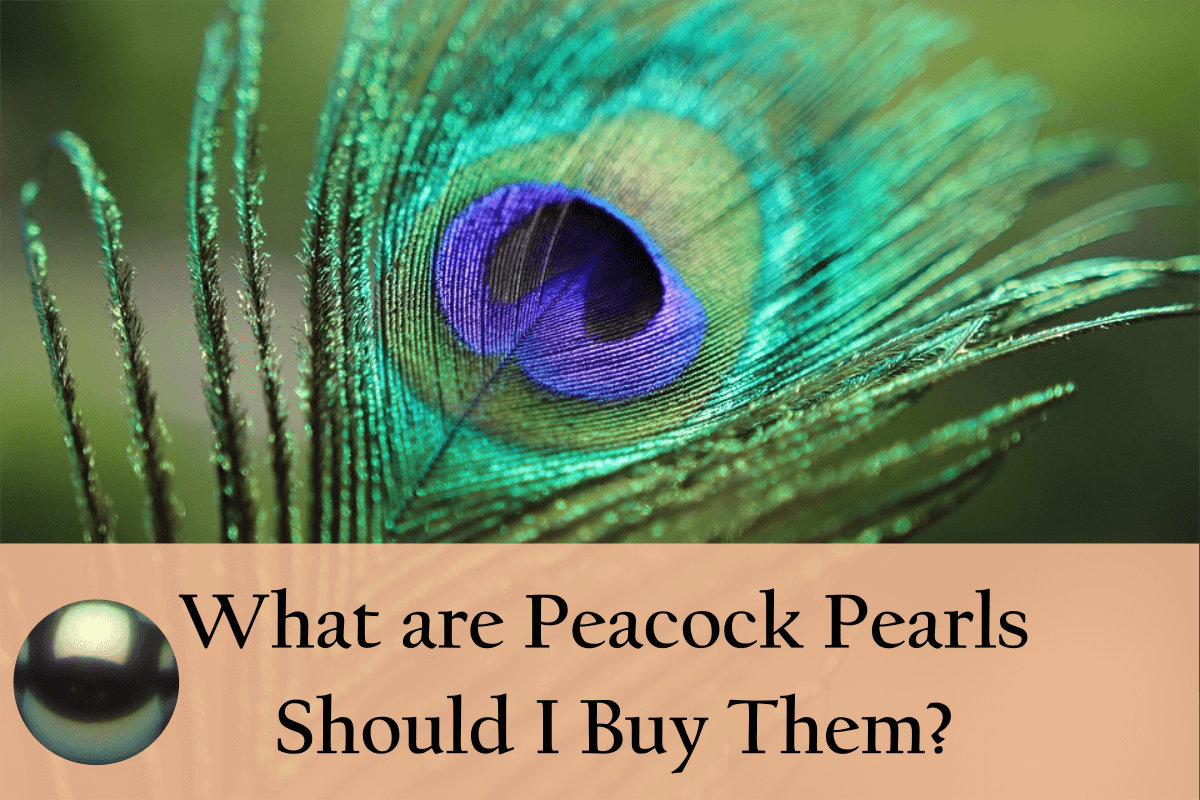Say the word peacock and what comes to mind? Chances are you thought of the beautiful green-blue iridescent colors that make the peacock’s feathers so special.
But peacock pearls?
This term refers to the specific peacock like overtones that are found on certain Tahitian pearls. They can also refer to dyed freshwater or Akoya pearls. Read on to find out more.
What’s a Peacock Pearl?
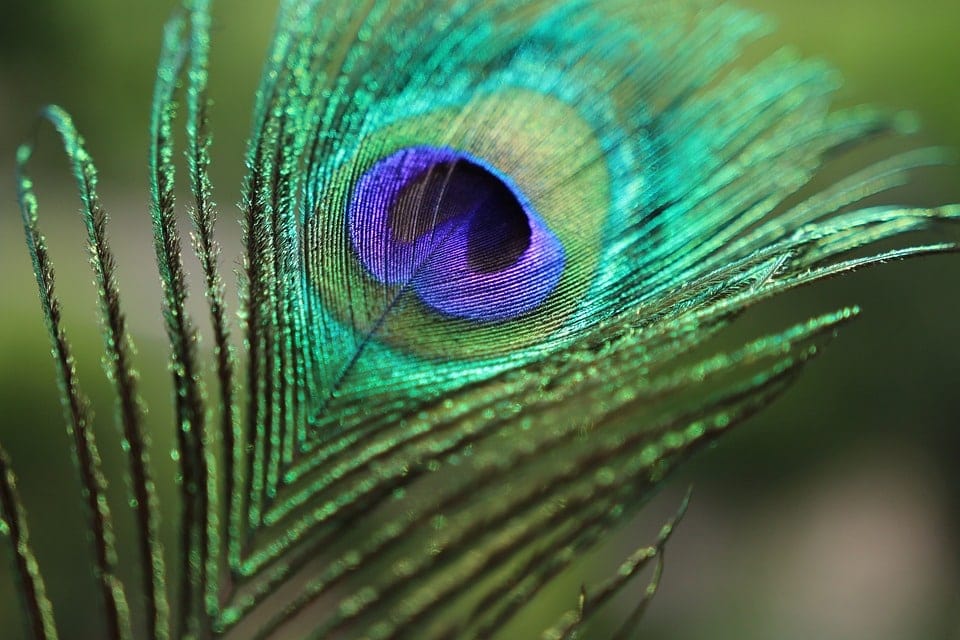
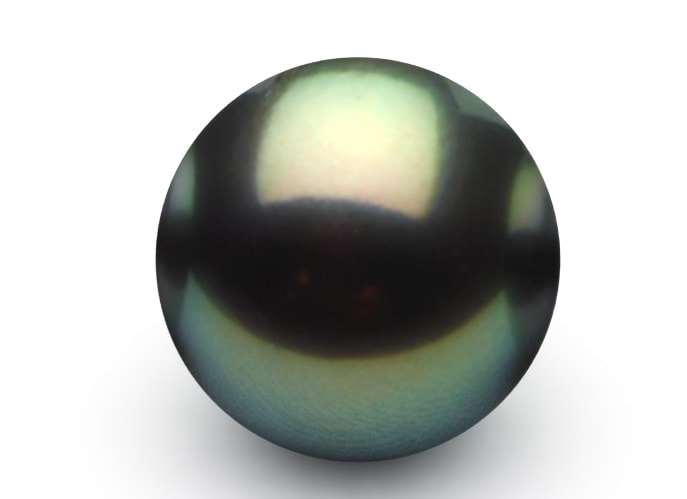
Notice the peacock-like colors on this pearl.
Peacock pearls don’t refer to a type of pearl per se. Rather, they’re the name given to a specific type of dark Tahitian pearl.
The Gemological Institute of America (GIA) outlines that the term peacock pearl is given to Tahitian pearls that exhibit a dark green-gray to blue-gray body tone with an aubergine or pink overtone. This is a guideline only and the range of pearls that can fall into this category varies quite a bit as there aren’t specific standards to go by.
Let’s back track a bit.
A Tahitian pearl is the only natural dark pearl commonly found on the market. Sea of Cortez pearls are also naturally dark but they’re so rare that you’ll rarely come across them. Although Tahitian pearls are called ‘black pearls’ this is a misleading term, because these pearls are rarely, if ever, completely black.
Rather, they feature a darkish body tone that can be gray, steel, brown, green, purple or charcoal among others. But what makes these pearls really unique is the display of overtones found on their surfaces.
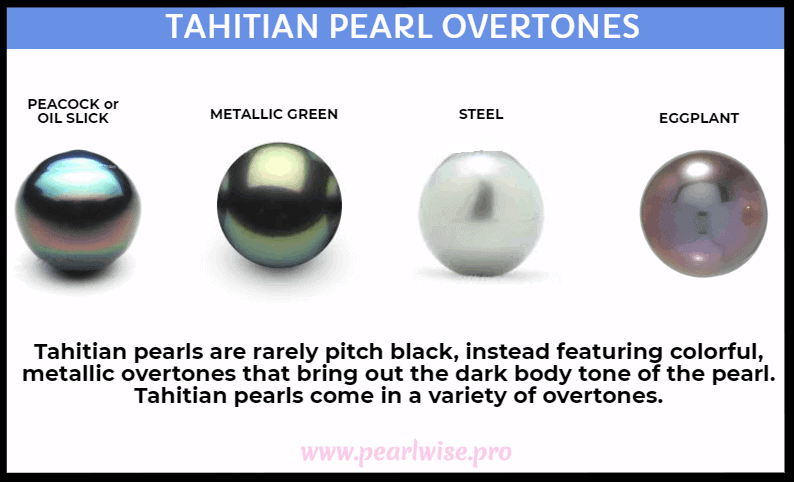
And this is where peacock pearls come in.
The most popular type of Tahitian pearl overtone is the peacock overtone, also called an ‘oil slick’. This particular type of pearl overtone is a burst of iridescent colors, a riot of greens, blues, aubergines and pinks.
These colors over a grayish-greenish body tone creates a beautiful natural look very much like the colors of a peacock.
How Do Tahitian Pearls Get the Peacock Overtone?
Why Tahitian pearls receive this amazing overtone hues can be attributed to a number of factors. It’s partly because of the minerals in the water and the specific type of oyster that produces the pearl. The Pinctada margaritifera, also called the black lipped oyster, lives in the waters of French Polynesia and is known for secreting dark nacre.
Other factors that contribute to the resulting color and overtone of Tahitian pearls include the way in which the pearls form, including the thickness of nacre, the trace elements in the water and the interaction of the pearl with light all of which contribute to create the beautiful colors of the peacock pearl.
Are Peacock Pearls Natural?
While peacock pearls are naturally produced by the black-lipped oyster, you’ll come across many artificially colored pearls on the market.
Black Akoya or freshwater pearls are dyed to gain the color as these pearls don’t occur in black in nature. However, these pearls don’t have the peacock overtone and are easy to spot as dyed pearls. Dyed Chinese freshwater pearls are sometimes called peacock pearls but they’re easy to distinguish from Tahitian pearls.
While there have been attempts to artificially replicate the peacock color of Tahitian pearls, so far, these efforts haven’t been successful.
It’s exceptionally difficult to imitate the natural iridescence of the oil slick on Tahitian pearls and most Tahitian pearls you see on the market are natural. When buying a peacock pearl, closely inspect the pearl to see whether it’s a dyed freshwater or an actual Tahitian pearl.
Because the term peacock pearl is so loosely defined, any pearl with similar body tones can technically be called a peacock pearl.
Should I Buy Peacock Pearls?
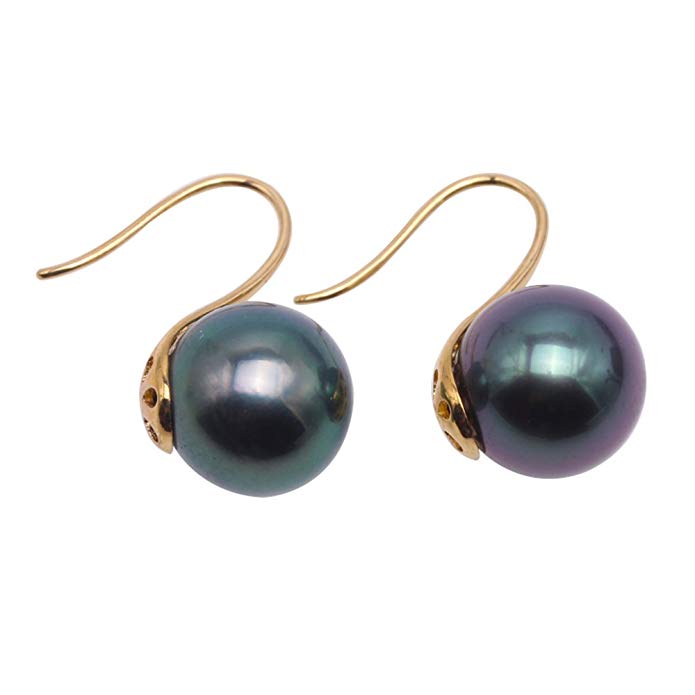
Tahitian peacock pearl earrings. See these here.
Peacock pearls are an excellent option if you like a pop of sophisticated and stylish color from your pearls. They’re a favorite among people searching for contemporary, non-traditional looking pearls.
Peacock pearls are rare and high-quality ones are difficult to come across. Because the demand for these pearls is high and the supply is not as abundant as Akoya or freshwater pearls, Tahitian pearls can be quite expensive. Tahitian pearls sit closer to South Sea pearls on the pearl price spectrum. They can range from $100 to around $500 depending on the quality and size.
If you can afford it, Tahitian peacock overtone pearls are a beautiful choice for anyone. The range of colors they exhibit make them a perfect match for any skin tone and any gender. For the best peacock pearls, look for a Tahitian pearl with gray or green body tone featuring a mix of blue, green, aubergine and gold overtone hues.

